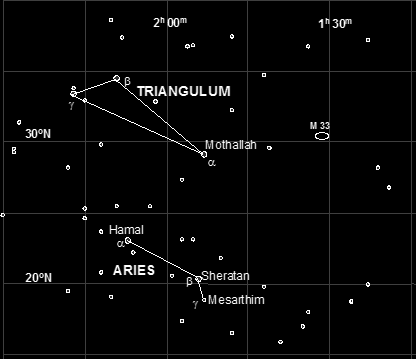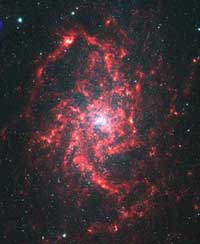Aries and Triangulum

Aries contains little of interest for amateur astronomers, other than Mesarthim (Gamma Arietis), which was one of the first telescopic double stars to be discovered, by Robert Hooke in 1664. Exactly one hundred years after that in the equally unremarkable adjacent constellation of Triangulum, Charles Messier came across a nebula which he listed as the 33rd object in his famous catalogue and which later became known as the “Pinwheel” galaxy.

Pinwheel Galaxy (M33)
Fairly recent research has indicated that Messier 33 was probably first discovered, not by Messier, but by a little known seventeenth century astronomer, Hodierna. Apart from the more famous Andromeda galaxy, the Pinwheel is the closest major galaxy to our own Milky Way. It is a much smaller galaxy than either Andromeda or the Milky Way and is oriented face on towards us. Both of these factors contribute towards its notoriously low surface brightness. Although at magnitude 6.0 it is theoretically visible to the naked eye, the low contrast it offers makes it quite tricky to see through a telescope. It is also quite large (covering about half a degree visually) so the best views are probably to be obtained through binoculars.
POWERPOINT SLIDE SHOW (296 KB)